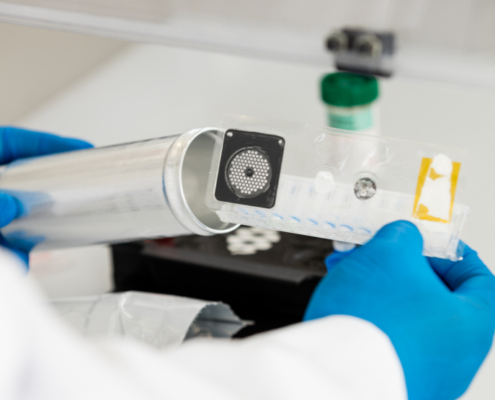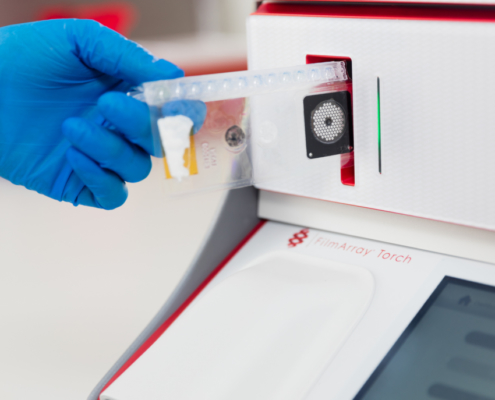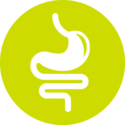What’s the Deal with Diarrhea?
It happens to everybody, but nobody likes talking about it. That’s why many of us don’t know the basics about diarrhea. We’re here to answer basic questions about what it is, what causes it, and how it can be diagnosed and treated.
What is Diarrhea?
Simply put, diarrhea refers to loose, watery stools. You have diarrhea if you experience three or more loose stools in a single day—but a person with a severe case could have ten or more. Diarrhea commonly occurs alongside other gastrointestinal symptoms, including nausea, vomiting, abdominal pain, cramping, bloating, fever, or even bloody stools.
What Causes Diarrhea?
One of the main functions of the small and large intestines is to absorb water during the digestive process. This includes water from food and drinks, as well as fluids released by the body to help with digestion, like saliva, gastric acid, and bile. Water absorption during digestion is key to preventing dehydration and maintaining a healthy balance of electrolytes in the body. A healthy small intestine absorbs about 6.5 liters of water every day (that’s more fluid than three 2-liter bottles of soda), and the large intestine absorbs about 1.3 liters1. Diarrhea is caused by reduced absorption of water by the intestines, or by increased secretion of bodily fluids into the intestine.
Diarrhea can generally be classified as infectious—caused by a microorganism such as bacteria, a virus, or a parasite—or non-infectious. Infectious diarrhea is most often viral and can be spread between people through improperly prepared food, exposure to contaminated or untreated water, or as a result of traveling. Non-infectious diarrhea has many causes, such as a reaction to medication, a food intolerance, stress, or even too much caffeine. Chronic illnesses, such as irritable bowel syndrome (IBS) or irritable bowel disease (IBD), can also cause diarrhea.
How is Diarrhea Treated?
Diarrhea is usually mild and lasts just a few days. It can generally be treated by staying hydrated and drinking fluids that contain electrolytes, like sports drinks. For severe or prolonged symptoms, however, proper treatment relies on determining the cause of the illness.
When it comes to non-infectious diarrhea, solutions may include stopping a medication, avoiding a specific food, or seeking treatment for an underlying gastrointestinal disorder. For example, Crohn’s disease and ulcerative colitis are chronic irritable bowel diseases that typically require treatment by a doctor specializing in gastroenterology.
For the treatment of infectious diarrhea to be most effective, it needs to be specific to the pathogen responsible for it. Antibiotics are only appropriate in some cases (for example, Campylobacter and Shigella bacteria, as well as parasites, cause diarrhea and can be targeted by antibiotic therapy). However, antibiotics are not effective at treating the majority of diarrhea cases, which tend to be viral, and can sometimes even worsen the infection (as with Shiga-like toxin producing E. coli).
How is Diarrhea Diagnosed?
The number of microorganisms that can cause diarrhea is enormous. A gastrointestinal diagnostic test is required to pin down the culprit. Unfortunately, with traditional laboratory methods, a causative agent is identified in only about 3% of stool samples2. Additionally, because some methods require growing the microorganism, test results are not available for a few days and typically only target a select number of bacterial pathogens.
This is why we engineered the BioFire® FilmArray® Gastrointestinal (GI) Panel. One patient stool sample, one test, and about one hour are all it takes to get results on 22 microorganisms that cause infectious diarrhea—including 13 bacteria, 5 viruses, and 4 parasites. The BioFire GI Panel positively identifies a pathogen in about 40-50% of stool samples2,3,4, dramatically increasing the likelihood of determining the causative microorganism.
Learn More About Syndromic GI Testing from BioFire
- Visit the BioFire GI Panel webpage to learn how rapid syndromic testing can benefit your institution and to request a free demo.
- Learn how and why we take a syndromic approach to infectious disease diagnostics.
- Gastrointestinal pathogens are especially active during the summertime. See how real-time, pathogen-specific data from BioFire® Syndromc Trends can help track them.
References:
- Gurrent, R.L., et. al. Practice Guidelines for the Management of Infectious Diarrhea, Clinical Infectious Diseases 2001; 32:331–50
- Spina A, Kerr K, Cormican M, Barbut F, Eigentler A, Zerva L, et al. Spectrum of enteropathogens detected by the FilmArray GI Panel in a multicentre study of community-acquired gastroenteritis. Clinical Microbiology and Infection. 2015;21(8):719–28.
- Buss SN, Leber A, Chapin K, Fey PD, Bankowski MJ, Jones MK, et al. Multicenter Evaluation of the BioFire FilmArray Gastrointestinal Panel for Etiologic Diagnosis of Infectious Gastroenteritis. Journal of Clinical Microbiology. 2015;53(3):915–25.
- Stockmann C, Pavia AT, Graham B, Vaughn M, Crisp R, Poritz MA, et al. Detection of 23 Gastrointestinal Pathogens Among Children Who Present With Diarrhea. Journal of the Pediatric Infectious Diseases Society, 2017 Sep 1;6(3):231-238. doi: 10.1093/jpids/piw020.







